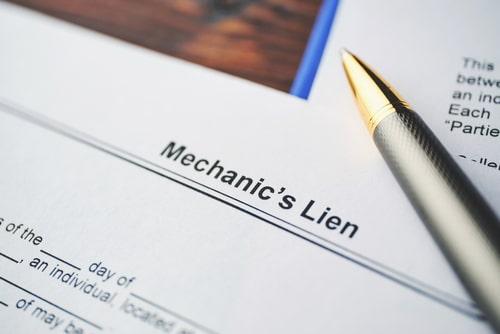How Can a Mechanic’s Lien Affect a Residential Real Estate Transaction?
 There are many different legal and financial issues that may play a role in a residential real estate transaction. Before a home can be sold, any encumbrances against the property must be cleared. In many cases, these encumbrances take the form of liens or debts that the current property owner owes to another party. Mechanic’s liens are one type of encumbrance that many people may not be aware of, and by understanding these types of liens, property owners can be sure they are prepared to address them properly and avoid any issues that may affect their ability to sell their home.
There are many different legal and financial issues that may play a role in a residential real estate transaction. Before a home can be sold, any encumbrances against the property must be cleared. In many cases, these encumbrances take the form of liens or debts that the current property owner owes to another party. Mechanic’s liens are one type of encumbrance that many people may not be aware of, and by understanding these types of liens, property owners can be sure they are prepared to address them properly and avoid any issues that may affect their ability to sell their home.
What Is a Mechanic’s Lien?
When work is performed on a home or property, a contractor has the right to seek repayment for this work. If a homeowner or property owner does not fully pay for work, the contractor may place a mechanic’s lien on the property to recover what is owed. Subcontractors or suppliers may also use mechanic’s liens to recover money that was not paid to them by a general contractor, meaning that in some cases, homeowners may be responsible for paying these amounts, even if they paid their contractor in full.
A contractor must generally file a mechanic’s lien within four months after completing work. Mechanic’s liens may also be filed within two years after the completion of work, but other liens or encumbrances against the property will take priority over liens filed outside of the four-month window. Liens must be filed with the Recorder of Deeds in the county where the property in question is located. To protect the rights of the homeowner, a general contractor must provide them with a sworn statement listing all subcontractors and suppliers before receiving their first payment.
The four-month window for filing a mechanic’s lien also applies for subcontractors and suppliers. However, before filing a lien, these parties must provide a written notice to the homeowner detailing the work performed and the amount that is due. This statement must be provided within 90 days after completing work, and it must be sent at least 10 days before filing a mechanic’s lien.
After filing a mechanic’s lien, a contractor, subcontractor, or supplier will have two years to seek enforcement of the lien. They may do so by filing a lawsuit against the homeowner and asking for payment of the amount owed. In a lawsuit filed by a subcontractor or supplier, the general contractor or any other parties who had hired the plaintiff may be named as a party. If the plaintiff’s lawsuit is successful, they will be able to recover the full amount owed, as well as 10% interest per year and attorney’s fees.
Contact Our Wheaton Mechanic’s Lien Lawyers
At Stock, Carlson & Asso. LLC, we provide representation in matters involving mechanic’s liens, helping our clients resolve these issues effectively. We can help homeowners clear mechanic’s liens or other encumbrances to ensure that they will be able to sell a home. We can also provide representation for contractors or suppliers who are looking to use a mechanic’s lien to recover the payment due to them. To get legal help with these issues, contact our DuPage County residential real estate attorneys at 630-665-2500.
Sources:
https://www.investopedia.com/terms/m/mechanics-lien.asp
https://www.ilga.gov/legislation/ilcs/ilcs3.asp?ActID=2254&ChapterID=63

 630-665-2500
630-665-2500







